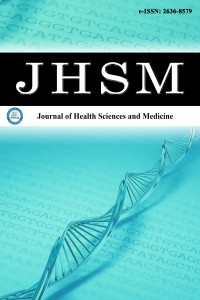1.
Constant CR, Murley AH. A clinical method of functionalassessment of the shoulder. Clin Orthop Relat Res. 1987;(214):160-164.
2.
Michener LA, McClure PW, Sennett BJ. American Shoulder andElbow Surgeons Standardized Shoulder Assessment Form, patientself-report section: reliability, validity, and responsiveness. JShoulder Elbow Surg. 2002;11(6):587-594. doi:10.1067/mse.2002.127096
3.
Ellman H, Hanker G, Bayer M. Repair of the rotator cuff. end-result study of factors influencing reconstruction. J Bone JointSurg Am. 1986;68(8):1136-1144.
4.
Yamamoto A, Takagishi K, Osawa T, et al. Prevalence and riskfactors of a rotator cuff tear in the general population. J ShoulderElbow Surg. 2010;19(1):116-120. doi:10.1016/j.jse.2009.04.006
5.
Colvin AC, Egorova N, Harrison AK, Moskowitz A, FlatowEL. National trends in rotator cuff repair. J Bone Joint Surg Am.2012;94(3):227-233. doi:10.2106/JBJS.J.00739
6.
Agout C, Berhouet J, Bouju Y, et al. Clinical and anatomic resultsof rotator cuff repair at 10 years depend on tear type. Knee SurgSports Traumatol Arthrosc. 2018;26(8):2490-2497. doi:10.1007/s00167-018-4854-1
7.
Malavolta EA, Chang VYP, Montechi JMN, et al. Does asubscapularis tear combined with a posterosuperior rotator cufftear affect postoperative functional outcomes? J Shoulder ElbowSurg. 2020;29(12):2523-2529. doi:10.1016/j.jse.2020.03.044
8.
Richards DP, Burkhart SS, Lo IK. Subscapularis tears: arthroscopicrepair techniques. Orthop Clin North Am. 2003;34(4):485-498.doi:10.1016/s0030-5898(03)00096-8
9.
Park JY, Chung SW, Lee SJ, et al. Combined subscapularis tearsin massive posterosuperior rotator cuff tears: do they affectpostoperative shoulder function and rotator cuff integrity? Am JSports Med. 2016;44(1):183-190. doi:10.1177/0363546515610552
10.
Yoo JC, McGarry MH, Jun BJ, Scott J, Lee TQ. The influence ofpartial subscapularis tendon tears combined with supraspinatustendon tears. J Shoulder Elbow Surg. 2014;23(6):902-908. doi:10.1016/j.jse.2013.09.015
11.
Garavaglia G, Ufenast H, Taverna E. The frequency of subscapularistears in arthroscopic rotator cuff repairs: a retrospective studycomparing magnetic resonance imaging and arthroscopicfindings. Int J Shoulder Surg. 2011;5(4):90-94. doi:10.4103/0973-6042.91000
12.
Gyftopoulos S, O'Donnell J, Shah NP, Goss J, Babb J, Recht MP.Correlation of MRI with arthroscopy for the evaluation of thesubscapularis tendon: a musculoskeletal division's experience.Skeletal Radiol. 2013;42(9):1269-1275. doi:10.1007/s00256-013-1669-5
13.
Furukawa R, Morihara T, Arai Y, et al. Diagnostic accuracy ofmagnetic resonance imaging for subscapularis tendon tears usingradial-slice magnetic resonance images. J Shoulder Elbow Surg.2014;23(11):e283-e290. doi:10.1016/j.jse.2014.03.011
14.
Malavolta EA, Assuncao JH, Guglielmetti CL, et al. Accuracy ofpreoperative MRI in the diagnosis of subscapularis tears. ArchOrthop Trauma Surg. 2016;136(10):1425-1430. doi:10.1007/s00402-016-2507-8
15.
Lafosse L, Lanz U, Saintmard B, Campens C. Arthroscopicrepair of subscapularis tear: surgical technique and results.Orthop Traumatol Surg Res. 2010;96(8):S99-S108. doi:10.1016/j.otsr.2010.09.009
16.
Park MC, Elattrache NS, Ahmad CS, Tibone JE. "Transosseous-equivalent" rotator cuff repair technique. Arthroscopy.2006;22(12):1360.e1-1360.e5. doi:10.1016/j.arthro.2006.07.017
17.
Thigpen CA, Shaffer MA, Gaunt BW, Leggin BG, Williams GR,Wilcox III RB. The American Society of Shoulder and ElbowTherapists' consensus statement on rehabilitation followingarthroscopic rotator cuff repair. J Shoulder Elbow Surg.2016;25(4):521-535. doi:10.1016/j.jse.2015.12.018
18.
Yoon TH, Kim SJ, Choi YR, Shin JC, Alruwaili SH, Chun YM.Anterior rotator cable disruption does not affect outcomes inrotator cuff tear with subscapularis involvement. Knee Surg SportsTraumatol Arthrosc. 2021;29(1):154-161. doi:10.1007/s00167-020-05891-z
19.
Longo UG, Carnevale A, Piergentili I, et al. Retear rates afterrotator cuff surgery: a systematic review and meta-analysis. BMCMusculoskelet Disord. 2021;22(1):749. doi:10.1186/s12891-021-04634-6
20.
Ide J, Tokiyoshi A, Hirose J, Mizuta H. Arthroscopic repair oftraumatic combined rotator cuff tears involving the subscapularistendon. J Bone Joint Surg Am. 2007;89(11):2378-2388. doi:10.2106/JBJS.G.00082

